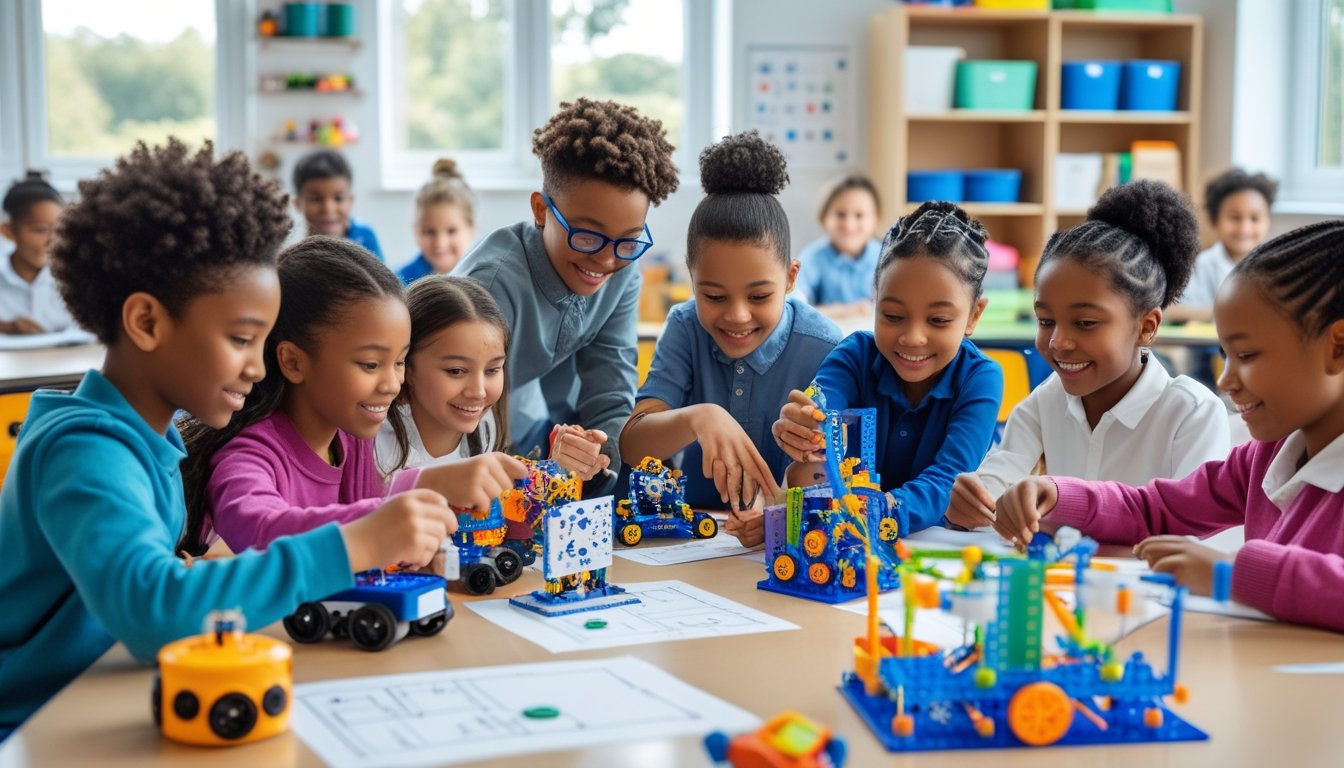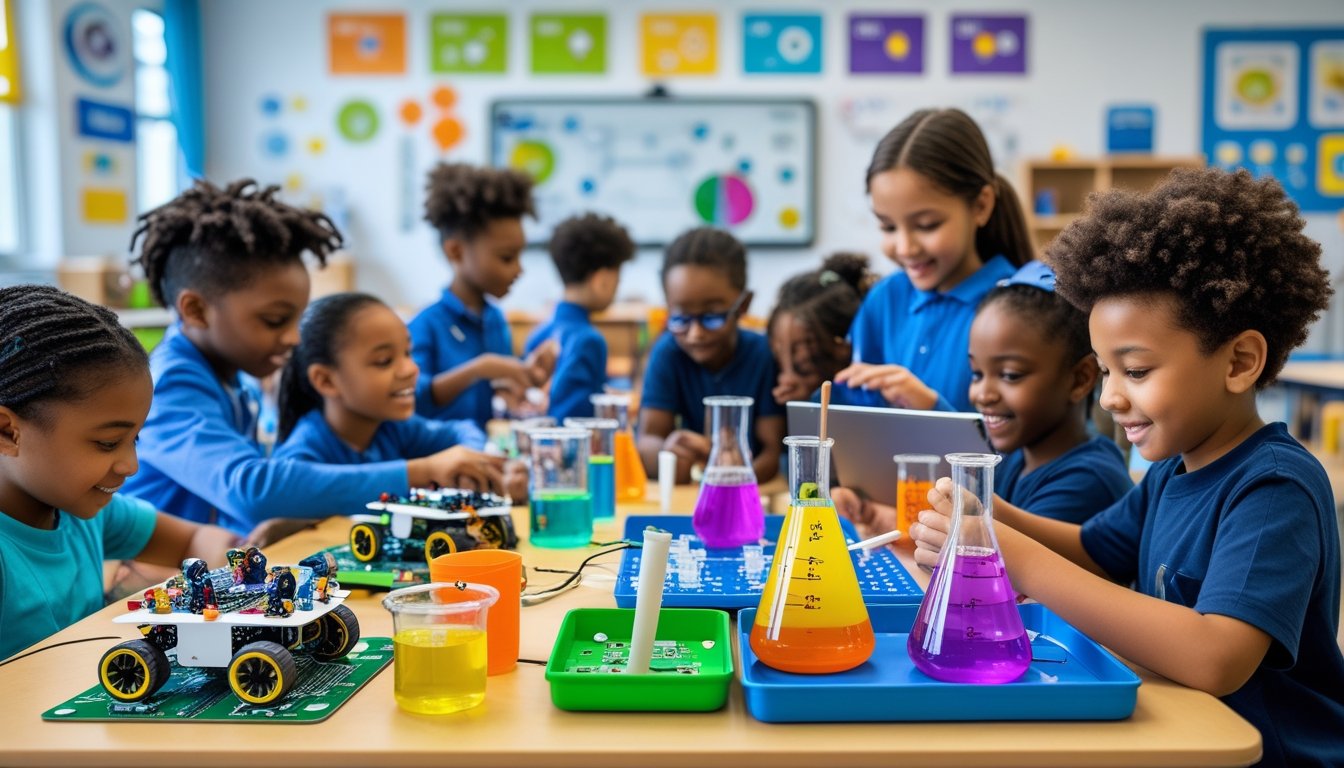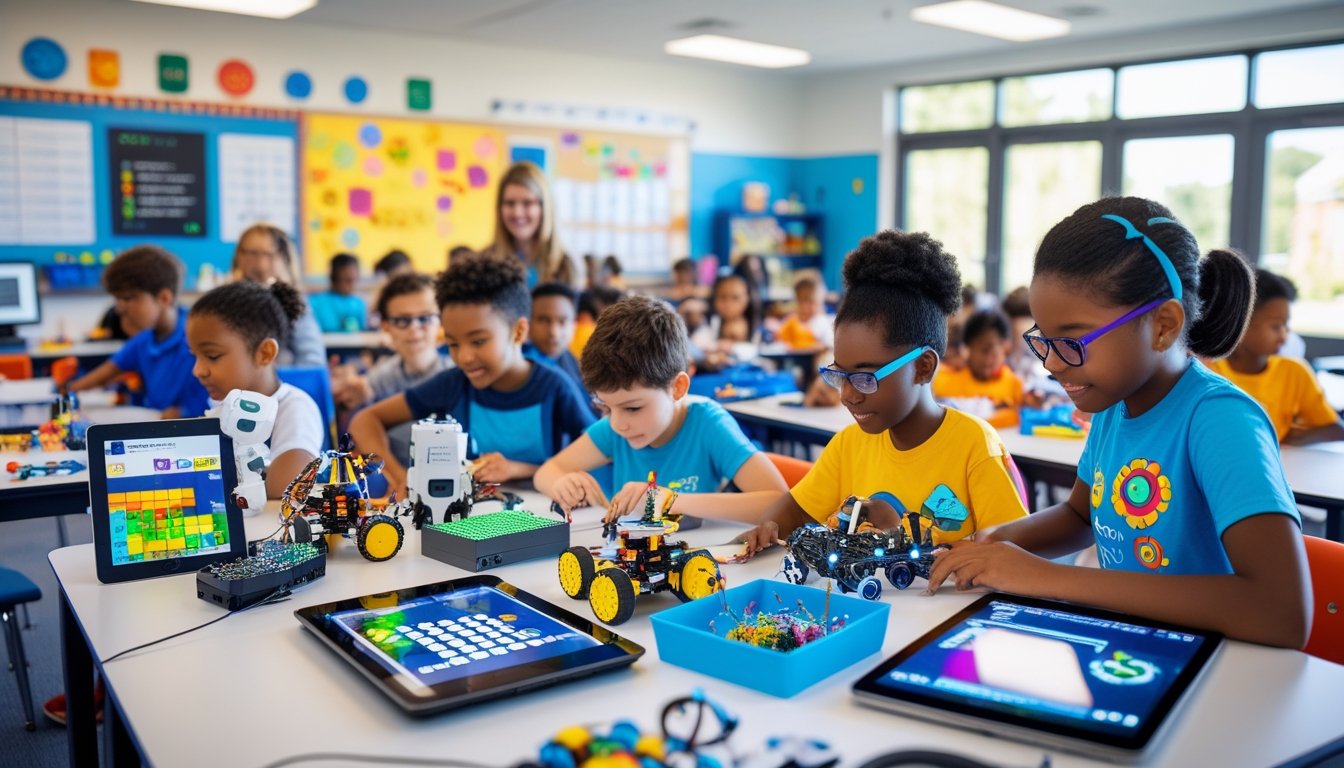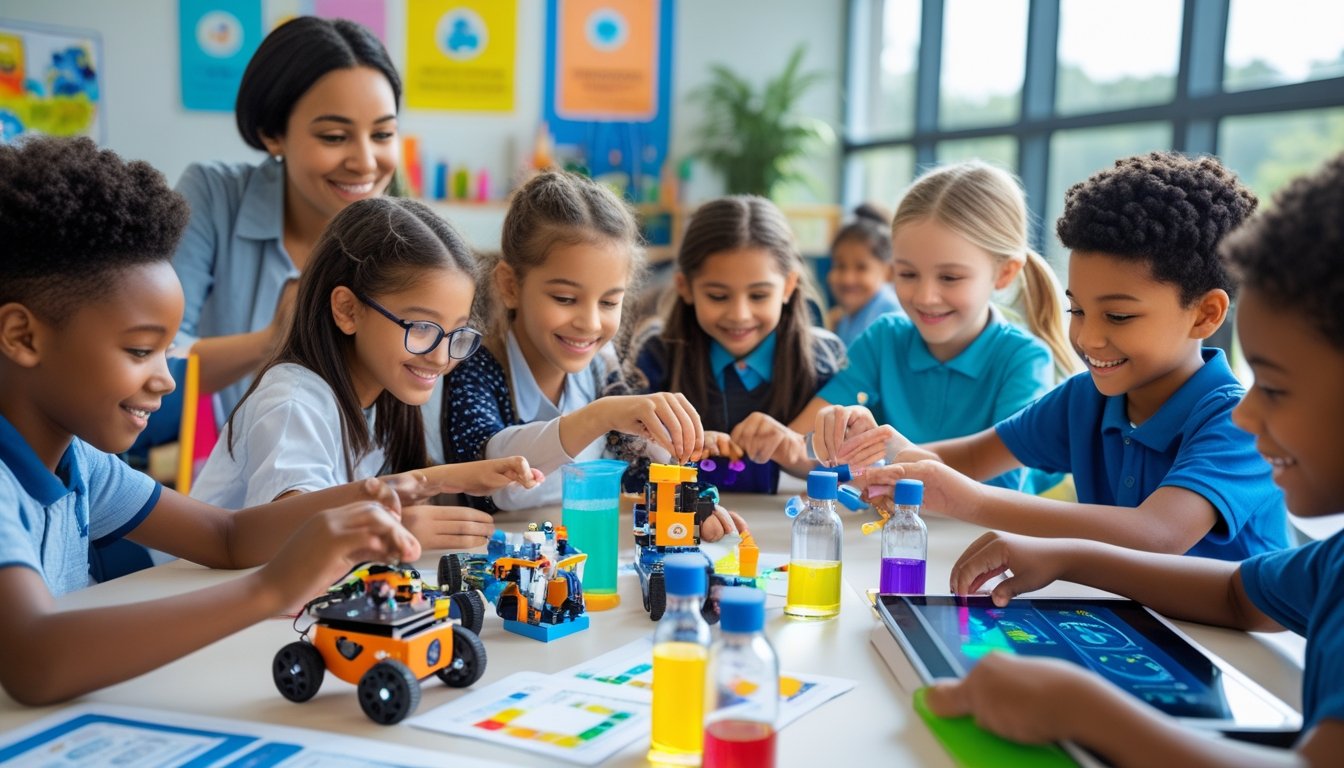Late updated: 01 Aug 2025 15:08
Written by:
Inspiring Young Innovators Through STEAM Activities: Transforming Education Strategies
In a rapidly evolving world, fostering a generation capable of innovation is more crucial than ever. Through engaging in STEAM activities, we lay the groundwork for young minds to think critically, solve complex problems, and explore creative solutions. STEAM not only fuels curiosity and creativity but also equips learners with the skills needed for future success in various fields.

At the heart of this movement is the integration of science, technology, engineering, arts, and mathematics. This interdisciplinary approach encourages students to view challenges from multiple perspectives and develop the resilience necessary to tackle them. By participating in hands-on projects, young learners gain invaluable experience that builds confidence and ignites their passion for learning.
As we explore effective strategies and tools for STEAM engagement, we recognise the importance of creating an inclusive and dynamic educational environment. Encouraging discovery and embracing diverse perspectives ensure that our future innovators are equipped to navigate and contribute to a tech-driven world.
Key Takeaways
- STEAM combines multiple disciplines for comprehensive learning.
- Hands-on projects build problem-solving and creative skills.
- Inclusive and diverse environments strengthen innovation.
Key Strategies for Inspiring Young Innovators Through STEAM Activities

Inspiring young innovators through STEAM activities involves integrating hands-on learning with creativity, fostering problem-solving skills and empowering students through their own projects. By engaging students through innovative techniques, we help them explore and discover new passions in STEAM fields. These strategies create an enriching environment that nurtures future innovators.
Integrating Hands-On Learning and Creativity
Hands-on learning is essential for captivating young minds and sparking interest in STEAM education. Through interactive activities, students are encouraged to experiment and develop their creative thinking. Incorporating art and design with science and mathematics creates opportunities for students to explore innovative ideas.
For instance, project-based learning allows students to engage in real-world challenges, blending creativity with technical problem-solving. Simulations, model-building, and interactive experiments enable learners to see concepts in action. By fostering an atmosphere where creativity is valued, we cultivate a spirit of innovation that is crucial for future success in STEAM.
Developing Problem-Solving Skills in Youth
A key component of STEAM learning is enhancing problem-solving skills. These skills are nurtured by presenting students with challenges that require critical thinking and innovative solutions. By working through complex problems, students build resilience and adaptability.
Collaborative projects and teamwork are critical in developing these skills. Students learn to communicate effectively and strategise collectively, which enhances their ability to tackle complicated tasks. Encouraging students to question assumptions and explore multiple solutions deepens their understanding. This problem-solving experience prepares them for the dynamic challenges they may face in future careers.
Empowerment Through Student-Driven STEAM Projects
Empowering students through their own projects allows them to take ownership of their learning journey. In student-driven STEAM projects, students set the agenda, choose their goals, and lead the execution with guidance from mentors. This autonomy boosts confidence and fosters a proactive learning attitude.
Mentorship is a crucial element of this empowerment. Role models provide insight and inspiration, helping students realise their potential. By forming connections with experts in STEAM fields, students gain valuable insights and encouragement. Furthermore, mentorship opens doors to new opportunities, enabling young innovators to thrive and pursue their aspirations in STEAM careers proudly.
Practical Approaches and Tools for Effective STEAM Engagement

Engaging young innovators effectively in STEAM activities involves leveraging modern technology, fostering collaboration, and enhancing essential skills. By focusing on tools like 3D printers, collaboration, and resilience, we can unlock creative potential and develop critical skills in students.
Utilising Technology and Tools Such as 3D Printers
In today's classroom, 3D printers have revolutionised how students engage with STEAM subjects. These devices make abstract concepts tangible, allowing students to create three-dimensional objects from digital designs. 3D printers inspire innovation by enabling learners to experiment with prototyping and design thinking.
Hands-on activities involving 3D printing empower students to bridge the gap between theoretical and practical knowledge. Projects such as designing a custom object or building models related to scientific concepts motivate students to think outside the box and apply engineering principles. By handling these inventions, students develop a deeper emotional connection to the learning process.
Introducing 3D printers into STEAM programmes ensures that students not only grasp the technical aspects but also understand the broader implications of their designs. They become familiar with problem-solving, creativity, and innovation, which are crucial in preparing them for future careers in technology-rich sectors.
Role of Collaboration and Mentoring in STEAM
The collaborative nature of STEAM learning enhances student engagement and broadens understanding through shared experiences. In our programmes, teamwork is vital for sparking creative solutions and advancing projects. Students learn to appreciate diverse perspectives, which is essential for successful innovation.
To amplify these benefits, we incorporate mentoring into our curriculum. By connecting students with industry professionals or experienced educators, we provide real-world context and inspiration. Mentors serve as role models, showing students the pathways to success in STEAM fields and helping them navigate challenges. This dynamic exchange of ideas fosters a robust environment where young innovators can thrive.
Through collaboration and mentorship, students develop essential communication and networking skills, equipping them for future STEAM careers. Such interactions not only boost confidence but also ignite a lasting passion for STEAM subjects.
Building Resilience and Communication Through Projects
Projects are the cornerstone of our STEAM curriculum, and we prioritise resilience and communication as critical components for student success. By engaging in open-ended challenges, like designing sustainable solutions or coding interactive programs, students learn to embrace failure as a natural part of the learning process.
Our focus on project-based learning emphasises resilience by encouraging students to iterate on their designs and overcome obstacles. This develops a growth mindset, crucial for adapting to changing circumstances or technological advances.
Communication plays a pivotal role. As students present their projects, they refine their public speaking skills and gain confidence articulating ideas to diverse audiences. Such interactive projects prepare students for future academic pursuits and career paths, equipping them with essential soft skills needed in today's global market.
Frequently Asked Questions

In the realm of education, STEAM serves as a powerful catalyst for inspiring young minds. By exploring various activities, we can nurture innovation and creativity. Let's now address some pertinent questions to better understand how to engage children with these rich learning experiences.
What activities can foster innovation in children within the STEAM framework?
Engaging children in hands-on projects, like building models or designing simple machines, can foster creativity and problem-solving. Activities that integrate arts, such as creating science-themed artwork or music, further enhance innovative thinking.
How can early childhood education be enhanced with STEAM initiatives?
Introducing STEAM concepts early on helps build a solid foundation in critical thinking. Simple activities like exploring nature, experimenting with shapes, or playing with building blocks encourage curiosity and foundational learning in science and maths.
Who are some notable figures in STEM that can serve as role models for young innovators?
Figures such as Ada Lovelace, known for her work on the first mechanical computer, or Mae Jemison, the first African-American woman in space, serve as inspiring role models. Their contributions highlight the impact of perseverance and innovation.
What are the key components of an effective STEAM programme for nurturing young inventors?
An effective programme includes interdisciplinary projects, interactive learning environments, and access to resources such as lab equipment or digital tools. Encouraging exploration and providing mentorship opportunities are crucial for development.
How do we measure the impact of STEAM activities on the development of innovative thinking in children?
We can assess the impact through observations of enhanced problem-solving skills and creativity. Structured assessments and project evaluations provide insights into how well children apply their knowledge in real-world contexts.
What strategies can educators utilise to integrate STEAM effectively into the curriculum?
Teachers can employ project-based learning, where students tackle real-world problems through collaborative efforts. Utilising resources such as workshops and guest speakers from STEM industries enriches the learning experience by providing practical perspectives.
